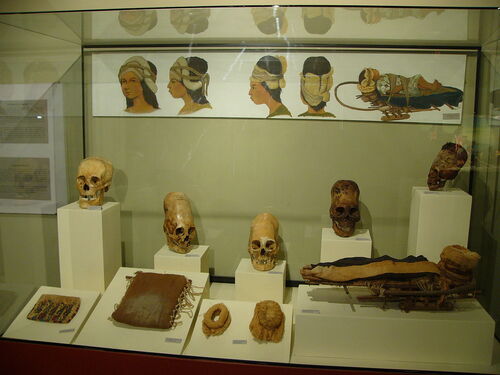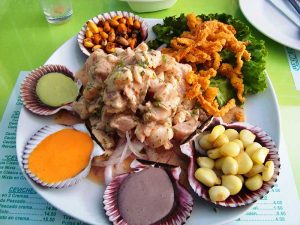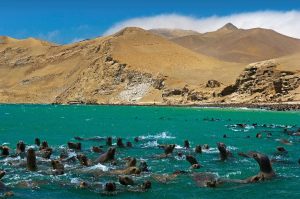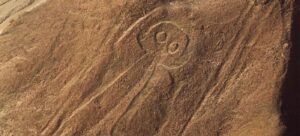Whilst not as famous or formidable as the ancient Inca, the Paracas Culture still held their own and flourished along the coastal Pacific regions of Peru.
Before visiting Paracas we can learn lots about this unique civilisation, which includes their characteristic artwork and textiles, as well as their more unusual traditions which involved purposely deforming human skulls. This will help us better connect with the town once we eventually end up visiting.
In this guide we’ll explore some interesting facts worth knowing about the Paracas Culture, as well as who they were and why they disappeared from Peru’s central coastal regions.
Table of Contents
Who Were The Paracas Culture?
An ancient civilisation that existed in Central Peru, the Paracas Culture thrived for roughly 700 years between 800 BCE up until 100 BCE. Although they were primarily based in the arid Ica region (which is located along the coast), they are often referred to as a more true Andean society given their ancient practices and beliefs.
Similar to the Nazca Culture, they were most famous for their creation of advanced irrigation and water collection systems, which was due to the hostile desert conditions that they lived in. As well as this, the Paracas Culture was known for deforming human skulls, creating elaborate artistic designs and even hunting sea lions – all of which we’ll learn more about later in this guide.
What Happened To The Paracas Culture?
It’s widely believed that around 100 BCE, the many sites that once belonged to the Paracas Culture were subsequently invaded and taken over by the Topará Culture. Whilst other civilisations would have prepared well for attacks, this wasn’t as much of a daily focus for the Paracas given they were already battling the hostile desert conditions.
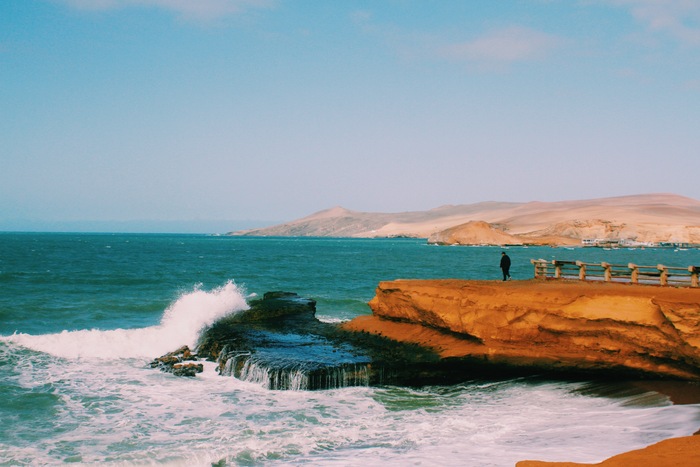
4 Interesting Facts That You Must Know About The Paracas Culture
Below we’ll take a look at some of the most unique and unusual things about the Paracas Culture – and what you should keep an eye out for when heading around the Ica region.
Hunters Of Sea Lions
Given they were a classic coastal civilisation, much of the diet of the Paracas Culture was made up of seafood and crustaceans, including shellfish and other marine species that are found in abundance in these waters. Whilst they also were known to have traded with other cultures from the mountains and jungles of Peru, they also hunted Sea Lions too – which is quite remarkable given how agile and strong these sea mammals are when swimming underwater.
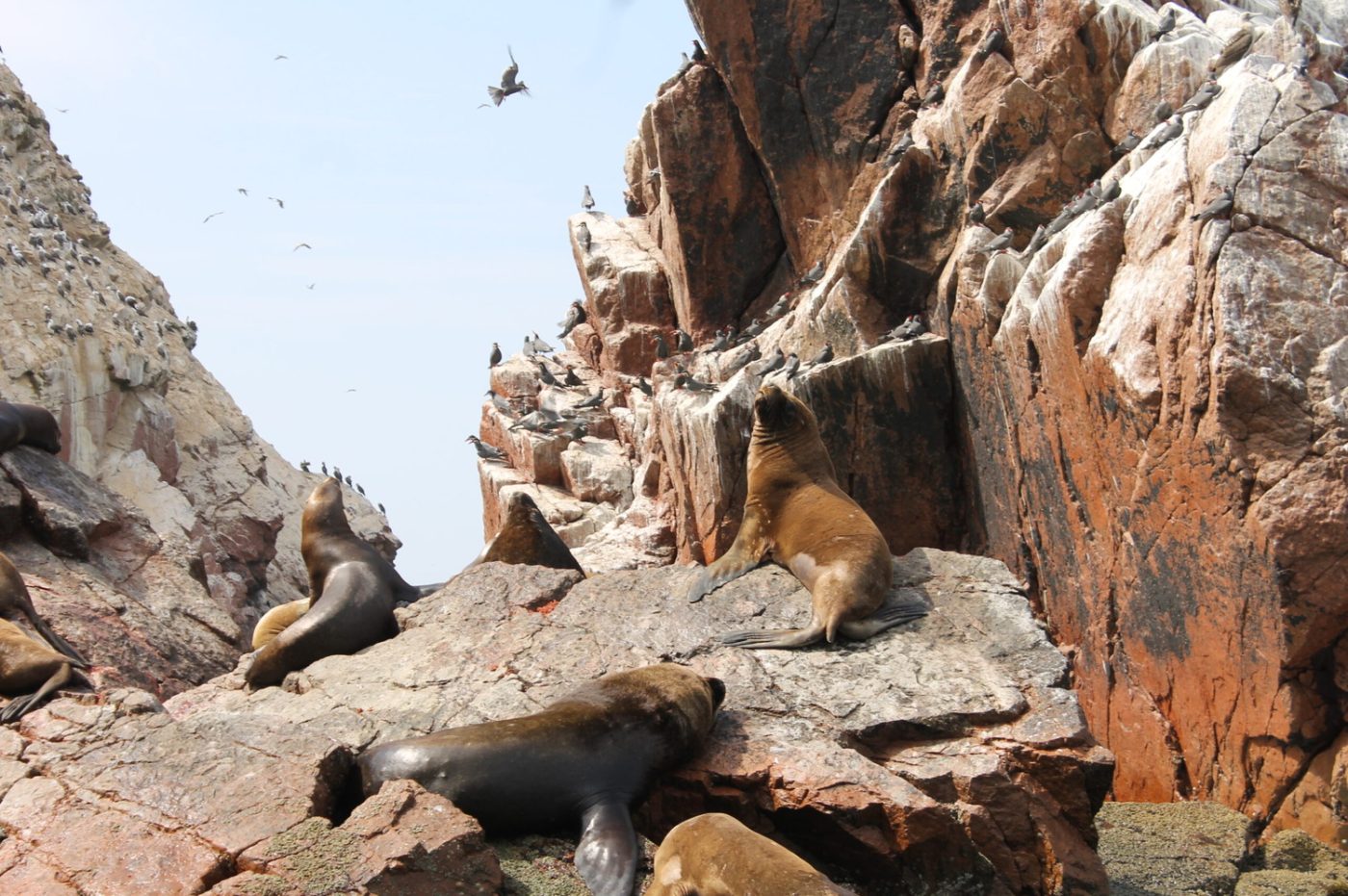
Creators Of The Mysterious Ancient Ruins Of Candelabro
Located right on the shores of the Pacific, this famous hieroglyph looks very similar in style to those of the Nazca region. Resembling a trident, this giant figure measures roughly 600 ft tall – meaning it’s very easy to see when sailing nearby (and in fact many boat tours to the Ballestas come close for some impressive views). The most interesting thing of all is that despite the constant pressures of erosion faced by the winds and Pacific Ocean – these ruins have remained perfectly intact for over 2000 years!
Designers Of Impressive Artwork And Ceramics
Ancient textiles and designs can be found all over Peru, however the Paracas culture really went a step ahead with their own developments and practices. Creating bright and bold colorful patterns, they would often then use designed cloths to wrap up mummies before burying them. They also liked to paint ancient animals and other symbols too, which can be found on various types of garments and ceramics.
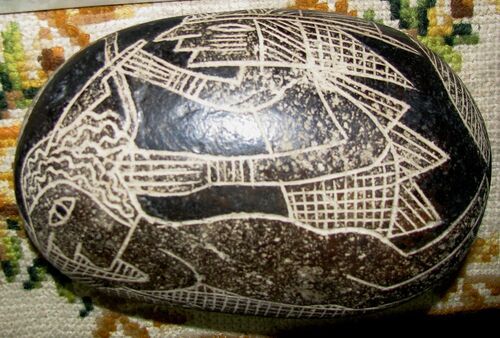
Regular Practitioners Of Deforming Human Skulls
One of the more bizarre practices of the Paracas culture was the deformation and trepanation of human skulls – and those of children to be exact. It was believed that these abnormally-shaped heads were signs of nobility, and as a result these children were seen as large sources of pride within their culture. The process was thought to have been carried out by compressing their heads between two wooden boards that were tightened together.
Overview Of The Paracas Culture
And that’s all for this guide on who the Paracas Culture were, and their importance throughout Peru’s long and proud ancient history.
Known for their unique artistic designs and advanced irrigation methods, this culture did extremely well to flourish as well as they did whilst living within the harsh desert environments. They also had many other bizarre traditions worth learning more about, such as their practice of deforming human skulls.
Are you thinking of visiting Paracas and learning more about this ancient civilisation? Then check out our day tour from Lima where we can see the infamous Candelabro Ruins and nearby Ballestas Islands, as well as getting to explore the nearby desert oasis of Huacachina.

